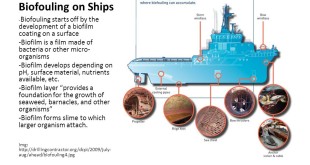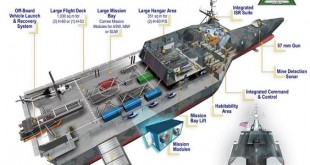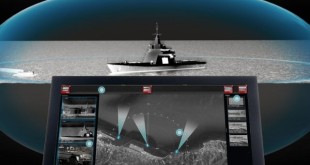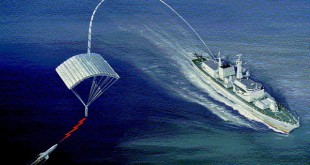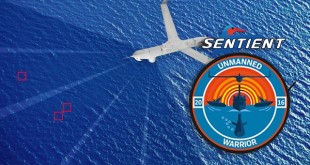Biofouling is one of the main problems faced by every type of ship at the sea. Marine growth such as barnacles and mussels have been the reason for problems such as decreased ship efficiency, corrosion etc. Biofouling not only sticks to the external surface of the ships but also gets into …
Read More »New Mine countermeasure technologies to detect and neutralize stealthy, smart and lethal sea mines
More than thirty countries produce mines, and twenty countries export them. Iran has reportedly laid several thousand naval mines, North Korea’s 50,000, China 100,000 or so, and Russia estimated quarter-million. Since World War II, sea mines have damaged or sunk four times more U.S. Navy ships than all other means …
Read More »US Navy’s Littoral Combat Ship (LCS) designed counter asymmetric threats, now upgraded with power projection capabilities for A2/AD environment
The US Navy’s $35+ billion “Littoral Combat Ship” program is intended to create a new generation of affordable surface combatants that could operate in dangerous shallow and near-shore environments, while remaining affordable and capable throughout their lifetimes. The littoral combat ship is a modular, reconfigurable ship, with three mission packages …
Read More »US Navy asks for new technologies for confronting Irregular and Expeditionary Warfare Challenges
U.S. Navy surface warfare experts are reaching out to industry for identification of technologies that enhance and/or accelerate military capabilities which directly address irregular, expeditionary, and Naval Special Warfare (NSW) capability challenges by meeting operational needs. The Navy’s primary objective for this BAA is to develop operational capabilities that …
Read More »MARSS’ NiDAR is a long-range surveillance system that can protect naval vessels from air, surface and underwater threats
Monaco-based MARSS has completed the installation of its NiDAR perimeter security system on the first of six offshore patrol vessels for the Royal Malaysian Navy. The installation is part of a contract awarded by Malaysia’s Boustead Naval Shipyard (BNS), which will see the company carry out the design, integration, delivery, …
Read More »Navies plan to use Intelligent Virtual Assistant (IVA) and Deep Machine Learning (DML) technologies to enhance situational awareness and battlespace decision making
Autonomous systems are increasingly critical to several current and future Department of Defense (DoD) mission needs. For example, the U.S. Army Robotics and Autonomous Systems (RAS) strategy report for 2015-2040 identifies a range of capability objectives, including enhanced situational awareness, cognitive workload reduction, force protection, cyber defense, logistics, etc, that …
Read More »New Materials for Warships include carbon and glass fibre, aluminium, syntactic foam, copper and graphene
To date, different types of carbon and alloy steels have proved to be the main materials of choice for naval ship construction around the world. While composites, titanium and aluminium alloys have been utilized for making hulls of smaller vessels such as patrol boats, these materials do not meet the …
Read More »Automated AI based soft kill countermeasures including electronic attack and cyber weapons will protect Warships from future missile threats
Naval Warships now faces wide spectrum of threats from hypersonic missiles, ballistic and cruise missiles, cavitating torpedoes, rail guns, lasers and UAVs. Anti-Ship Missiles are guided missiles most of them of the sea skimming variety, and many use a combination of inertial guidance and active radar homing. A good number …
Read More »US Navy is developing future multimission guided Missile Frigate (FFG(X)), with large power-projection capabilities
The US Navy’s “Littoral Combat Ship” program developed a new generation of affordable surface combatants that could operate in dangerous shallow and near-shore environments, while remaining affordable and capable throughout their lifetimes. LCS was designed for countering Asymmetric and A2/AD threats. However according to experts expressed doubt about its power …
Read More »Insitu ScanEagle flying ViDAR Payload enhances Maritime security by spotting and positively identifying objects under clear sun to wind, rain, haze and fog.
ViDAR, or visual radar, is the term coined by Australian computer vision specialist Sentient for a newly developed sensor that combines a high-definition electro-optic (EO) camera with automatic target detection algorithms to detect small maritime targets. The ScanEagle drone from Insitu equipped with the ViDAR payload showcased its newest …
Read More » International Defense Security & Technology Your trusted Source for News, Research and Analysis
International Defense Security & Technology Your trusted Source for News, Research and Analysis
